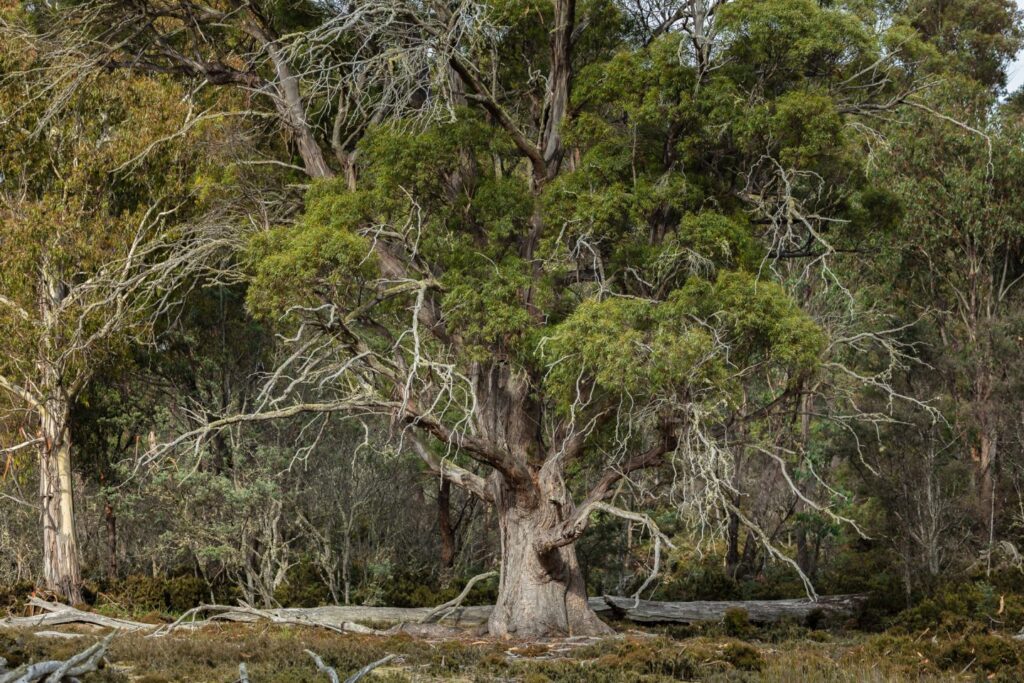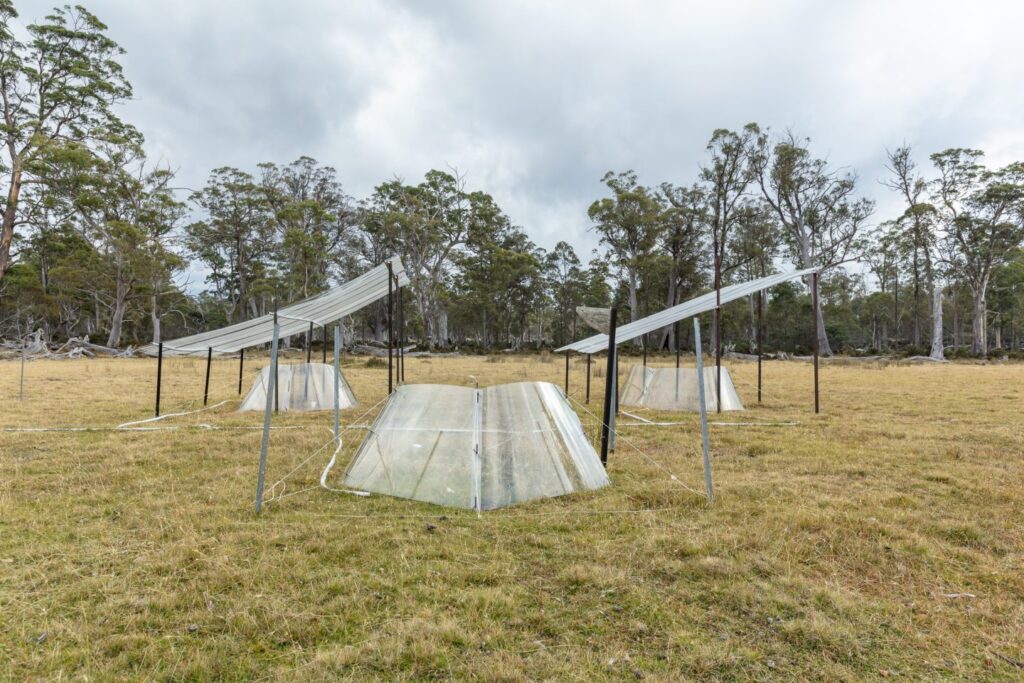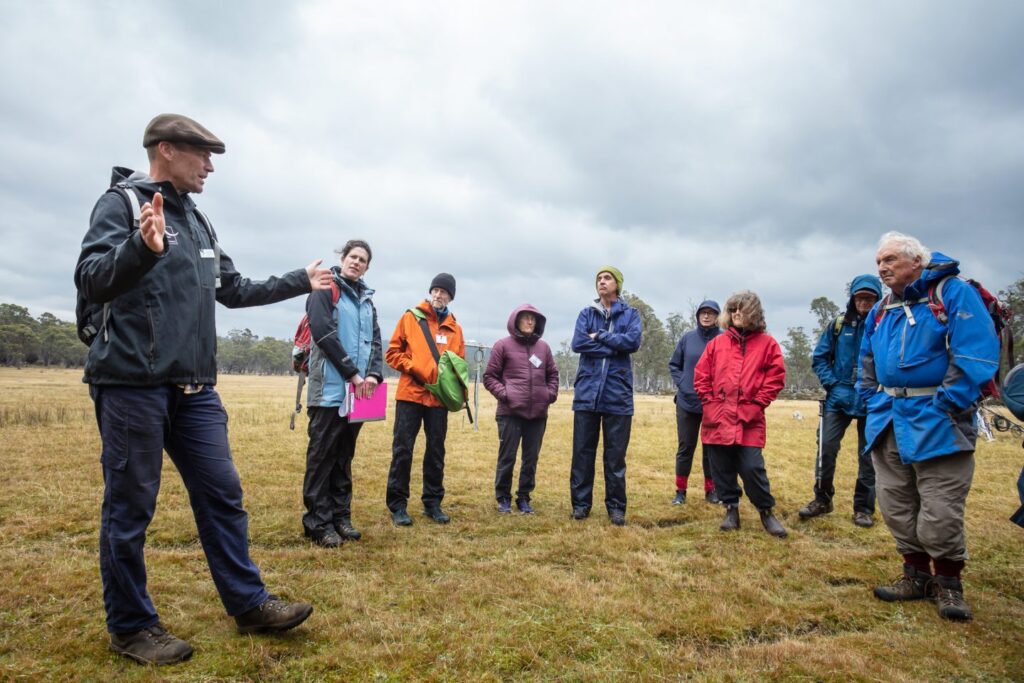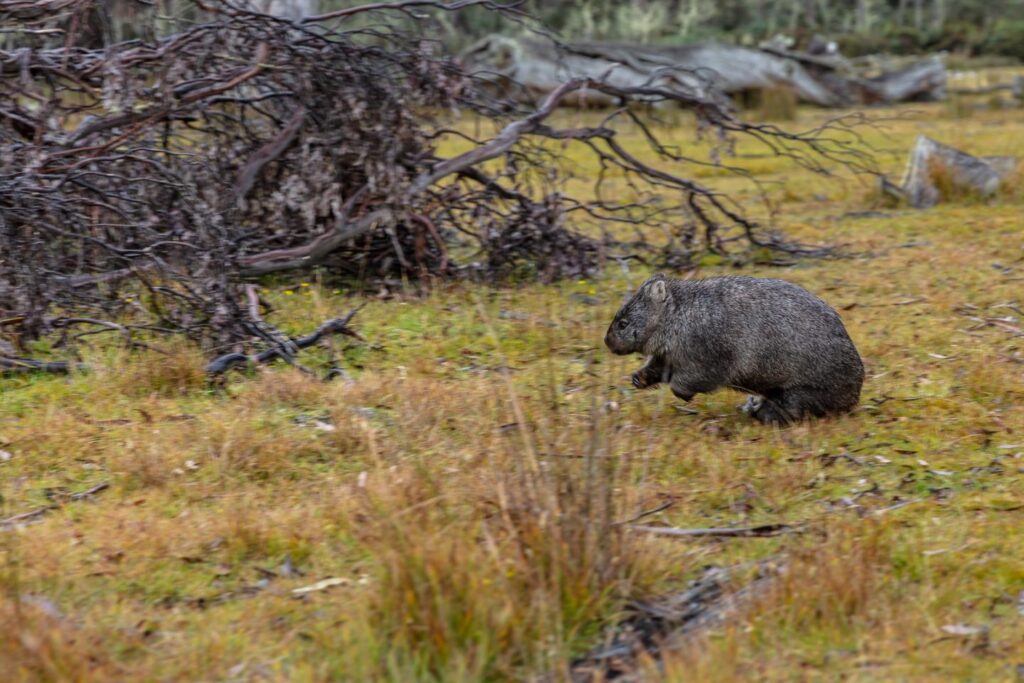In Tasmania’s central highlands on the shores of Lake Sorrell, the native forest and lowland grasslands of Silver Plains Reserve make up one of the largest properties in TLC’s estate.
At 6,595 hectares, Silver Plains Reserve is native forest as well as areas of lowland native grassland and marshes. The reserve borders Lake Sorell. Silver Plains’ old-growth swamp peppermint thrives along the extensive lake shore and over the hills down to Lake River, in the west of the reserve, where there is also an intact black gum floodplain community.
Silver Plains was purchased from forestry company Gunns Ltd in 2010 in what was at the time the biggest private conservation deal in Australian history. However, it was not permanently protected as a reserve until 2023. In the interim it has been used to generate Australian Carbon Credit Units through the New Leaf Carbon Project, with significant carbon sequestered in the forest that was saved from logging by its purchase.

CIDER GUMS AND MIGRATORY BIRDS
There are 11 threatened flora species recorded at Silver Plains Reserve, including the IUCN-endangered cider gum. The reserve’s 13 threatened fauna species include the endangered Tasmanian devil, eastern quoll and Tasmanian wedge-tailed eagle. Groups of over one hundred Latham’s snipe are regularly seen on the marshes – one of the largest aggregations of this migratory bird known for Tasmania and Australia. Although parts of the property’s forest had been extensively logged, the natural values are still substantial.
Due to its size and location, Silver Plains has also been the site of some of the TLC’s longest and most fruitful collaborations: with scientists, with volunteers and with deer hunters.
A SITE FOR SCIENCE
In 2014 Prof Mark Hovenden of the University of Tasmania first established his long-term climate warming experiments on Bucks Marsh, in the south of the reserve. This lead to the research group establishing Tasmania’s first Australian Mountain Research Facility (AMRF) site in 2019 – another site was later established at Five Rivers Reserve. These sites aim to predict the impact of the changing climate on the sustainability of subalpine grasslands, and determine if rising temperature and less-stable precipitation will threaten both the grasslands and the carbon sequestration services they provide.

Silver Plains Reserve was the start of TLC’s journey into eastern quoll population research. A pilot study with key partners examined the supplementation and survivorship of 20 eastern quolls (2020 – 2023), followed by an ARC Linkage grant-funded study that began in 2023 with the University of Tasmania and WWF-Australia.
Recreational deer hunters have been working in this part of Tasmania’s central highlands since long before the TLC began caring for this property. It’s a community-based relationship we value and maintain as we tackle this feral pest species and its impact on the landscape together. To improve our effectiveness, the Department of Primary Industries NSW (DPI) has investigated the impacts of recreational hunting on populations of invasive fallow deer on Silver Plains Reserve. A network of 64 cameras recorded deer movements over three years (2020-23) across 70,080 trap nights, producing over 1 million images of wildlife. These images included the targeted fallow deer, as well as some more cryptic native wildlife, including spotted-tailed quolls, Tasmanian bettongs and even a sneaky pygmy possum – a first record for the property! The study has provided many key insights including that 30% of a deer population needs to be removed annually to prevent them growing and spreading.

VOLUNTEER WEEDING MAKES A DIFFERENCE
Since 2011, volunteers have worked with our Reserves Management team on an intensive weed control program across Silver Plains Reserve. Each year staff and volunteers spend anywhere from 22 to 61 days controlling ragwort and mullein, and mapping gorse and California thistle for future treatment, in what is always a satisfying and fun weekend out. These weeding trips are renowed for good conversation and a real sense of achievement as we tackle the challenge of weed minimisation together.



